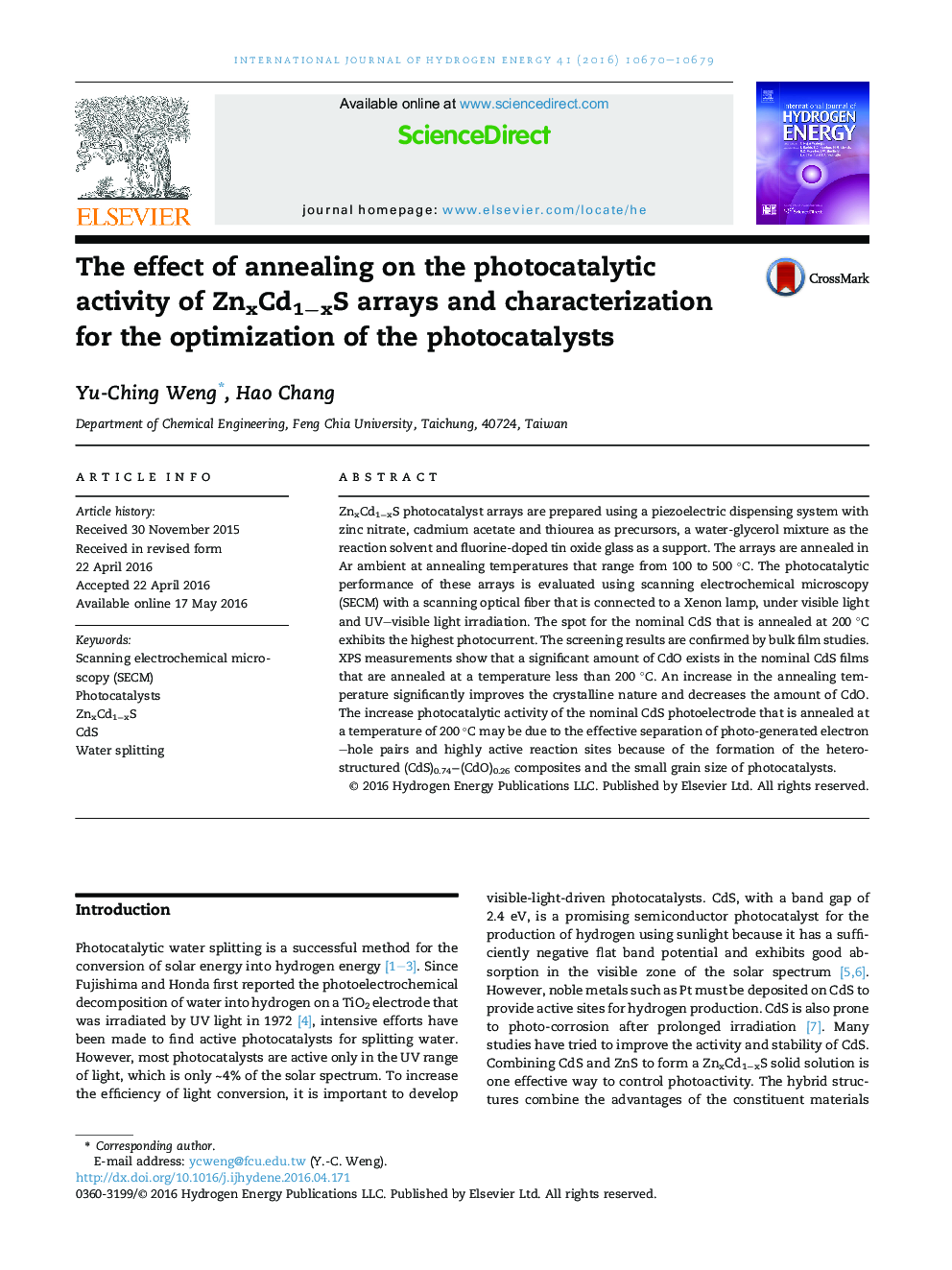| Article ID | Journal | Published Year | Pages | File Type |
|---|---|---|---|---|
| 1276792 | International Journal of Hydrogen Energy | 2016 | 10 Pages |
•The effect of annealing on the photocatalytic activity of ZnxCd1−xS arrays, as identified using SECM.•The nominal CdS that is annealed at 200 °C exhibits the highest photocurrent.•The nominal CdS has a hexagonal phase with a band gap of 2.4 eV.•The IPCE value for nominal CdS is 40% at a wavelength of 450 nm.•The superior photocatalytic activity is mainly attributed to the hetero-structure of CdSCdO materials.
ZnxCd1−xS photocatalyst arrays are prepared using a piezoelectric dispensing system with zinc nitrate, cadmium acetate and thiourea as precursors, a water-glycerol mixture as the reaction solvent and fluorine-doped tin oxide glass as a support. The arrays are annealed in Ar ambient at annealing temperatures that range from 100 to 500 °C. The photocatalytic performance of these arrays is evaluated using scanning electrochemical microscopy (SECM) with a scanning optical fiber that is connected to a Xenon lamp, under visible light and UV–visible light irradiation. The spot for the nominal CdS that is annealed at 200 °C exhibits the highest photocurrent. The screening results are confirmed by bulk film studies. XPS measurements show that a significant amount of CdO exists in the nominal CdS films that are annealed at a temperature less than 200 °C. An increase in the annealing temperature significantly improves the crystalline nature and decreases the amount of CdO. The increase photocatalytic activity of the nominal CdS photoelectrode that is annealed at a temperature of 200 °C may be due to the effective separation of photo-generated electron–hole pairs and highly active reaction sites because of the formation of the hetero-structured (CdS)0.74−(CdO)0.26 composites and the small grain size of photocatalysts.
